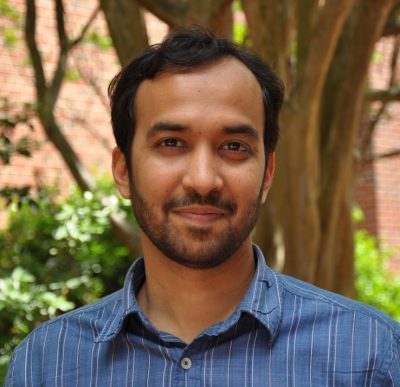Allocation of public health research investments may disadvantage black Americans, study finds
October 10, 2017
“Do black lives matter in public health research and training?” This was the question posed in a recent study co-led by faculty and alumni of the UNC Gillings School of Global Public Health.

Dr. Shabbar Ranapurwala
The full article was published online October 10 by the journal PLOS ONE. Research assistant professor Shabbar Ranapurwala, PhD, who works in the Gillings School’s Department of Epidemiology, co-authored the study with Molly Rosenberg, PhD, assistant professor of epidemiology in the Indiana University School of Public Health-Bloomington, and Angie Bengtson, PhD, postdoctoral research assistant in Brown University’s Department of Epidemiology. All three are alumni of the Gillings School’s epidemiology department. They were joined by co-author Ashley Townes, MPH, a doctoral student in the Indiana University-Bloomington’s Department of Applied Health Sciences.
Their paper focuses on racial disparities in public health research and funding, particularly in the case of homicide and firearm violence research. In light of recent, violent firearm attacks and the lack of public health response to such incidences, the research is especially timely.
“Violent deaths, including homicides and suicides, cause more fatalities in the United States each year than the ongoing opioid epidemic,” said Ranapurwala. “In fact, in 2014, more people died specifically of firearm-related homicides and suicides than opioid overdoses. Yet, funding for firearm research is historically low and firearm violence has not been declared an epidemic or crisis. Today, we know how many cars a person owns, even how many opioid prescriptions a person receives or fills, but we do not know how many firearms a person possesses. This lack of knowledge translates into mass shootings and violence that affects all of us. The largest burden of our inaction, however, is borne by black Americans and their families.”
The co-authors point to Healthy People, a U.S. government initiative that aims “to provide science-based, 10-year national objectives for improving the health of all Americans.” In 2010 and 2020, the agenda included a significant focus on reducing racially based health disparities in the country. Ranapurwala and his colleagues, however, found that the disproportionate allocation of funds for public health research likely prevents the realization of those goals.
To explore how investments made in public health research align with the unique health burdens experienced by white and black Americans, the research team conducted a cross-sectional study of all deaths that occurred in the U.S. in 2015. They compared the distribution of potential years of life lost (PYLL) across 39 causes of death, and examined the relationship between cause-of-death-specific PYLL, sorted by race, and key indicators of public health investment (such as federal funding and number of publications).
The researchers found that homicide was the number one contributor to PYLL among black Americans, while ischemic heart disease was the number one contributor to PYLL among white Americans. Firearm-related violence accounted for 88 percent of black PYLL attributed to homicide and 71 percent of white PYLL attributed to homicide.
“The statistic of potential years of life lost, unlike number of deaths or mortality rates, emphasizes the impact of deaths early in life and the loss of what an individual might have contributed to society,” said Bengtson. “Our findings highlight the incredible burden that homicide and firearm deaths place on black American communities.”
Despite the high burden of PYLL, however, homicide research was the focus of very few federal grants or publications. In comparison, ischemic heart disease garnered 341 grants and 594 publications.
“The fact that we are not treating homicide and firearm violence as a public health crisis disproportionately affects the health of black Americans,” said Rosenberg. “Our research results tie into current national conversations around both firearm violence and race, and they shine a light on the racial injustice that is present in public health research in the U.S.”
Compared to a white American, on an average, a black American will die 10 years earlier from suicide and seven years earlier from homicide.
“One of the reasons humans started living in societies,” Ranapurwala said, “was so that we can live healthier and longer lives, and everyone will have more resources and, hopefully, everyone will thrive. In an ideal society, then, we would invest resources where we face the greatest challenges. When it comes to firearms, we have failed to do that. We will continue to fail if we continue to say, ‘Public health is for all,’ while ignoring the misalignment of research funding with our greatest needs.”
Gillings School of Global Public Health contact: David Pesci, director of communications, (919) 962-2600 or dpesci@unc.edu
